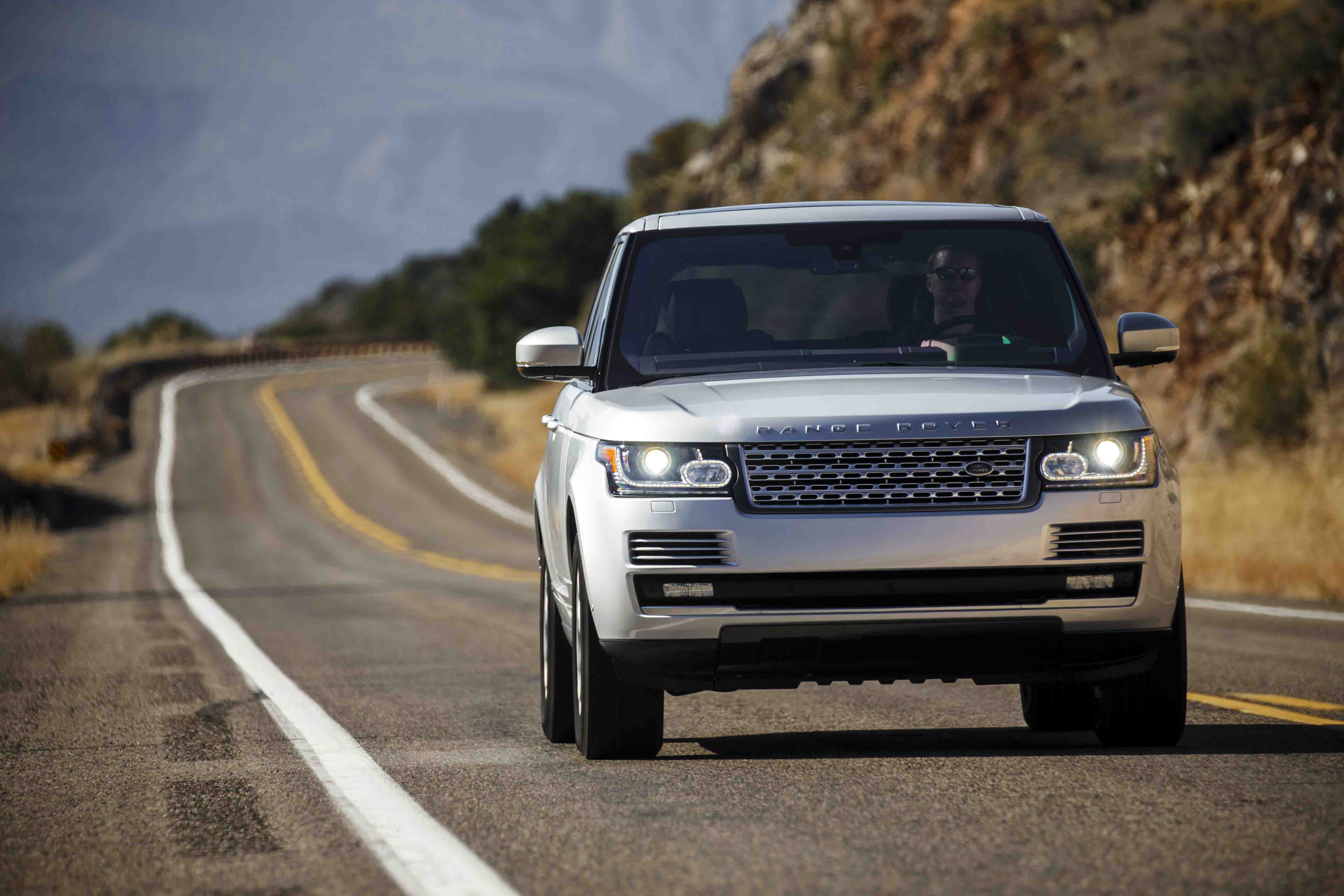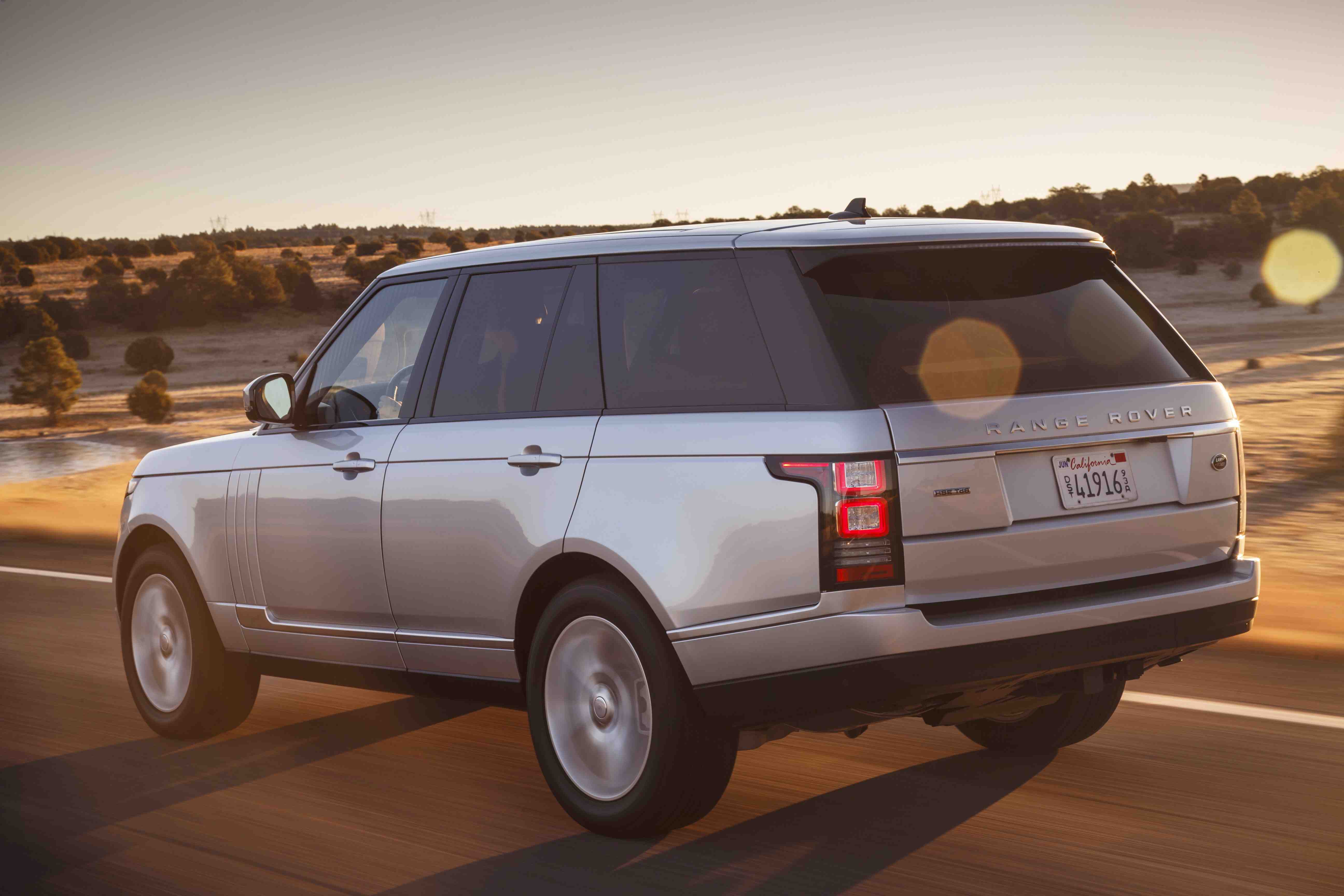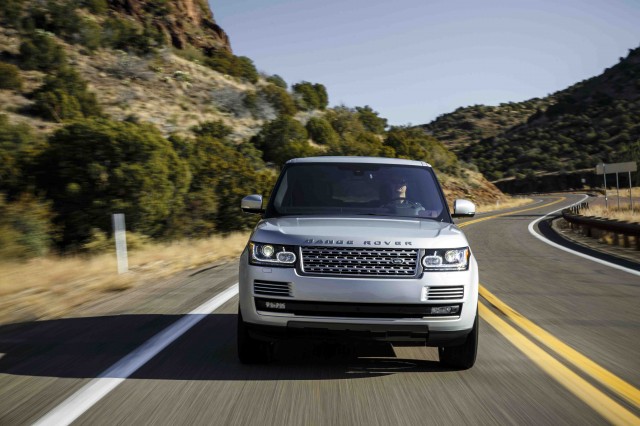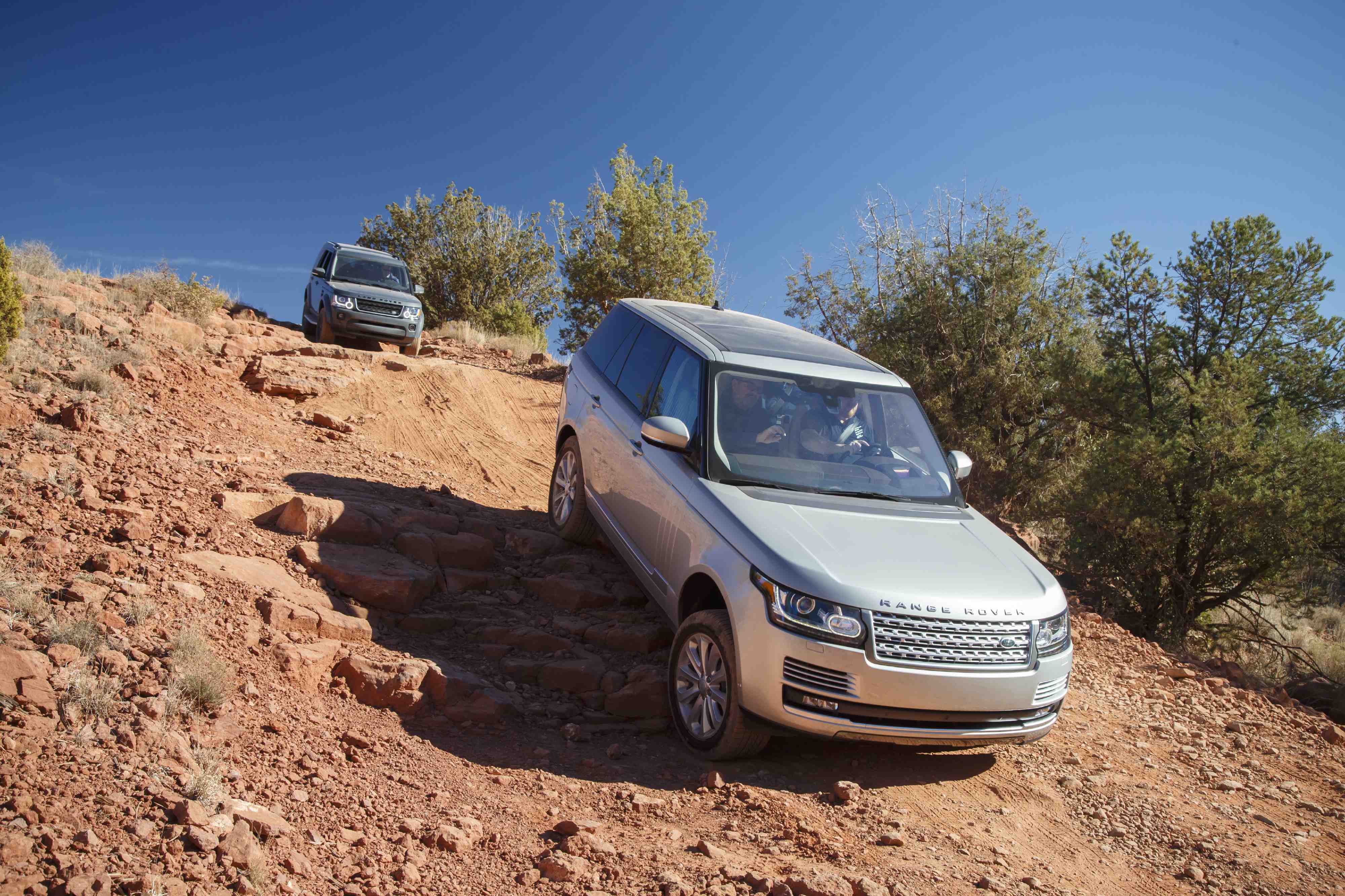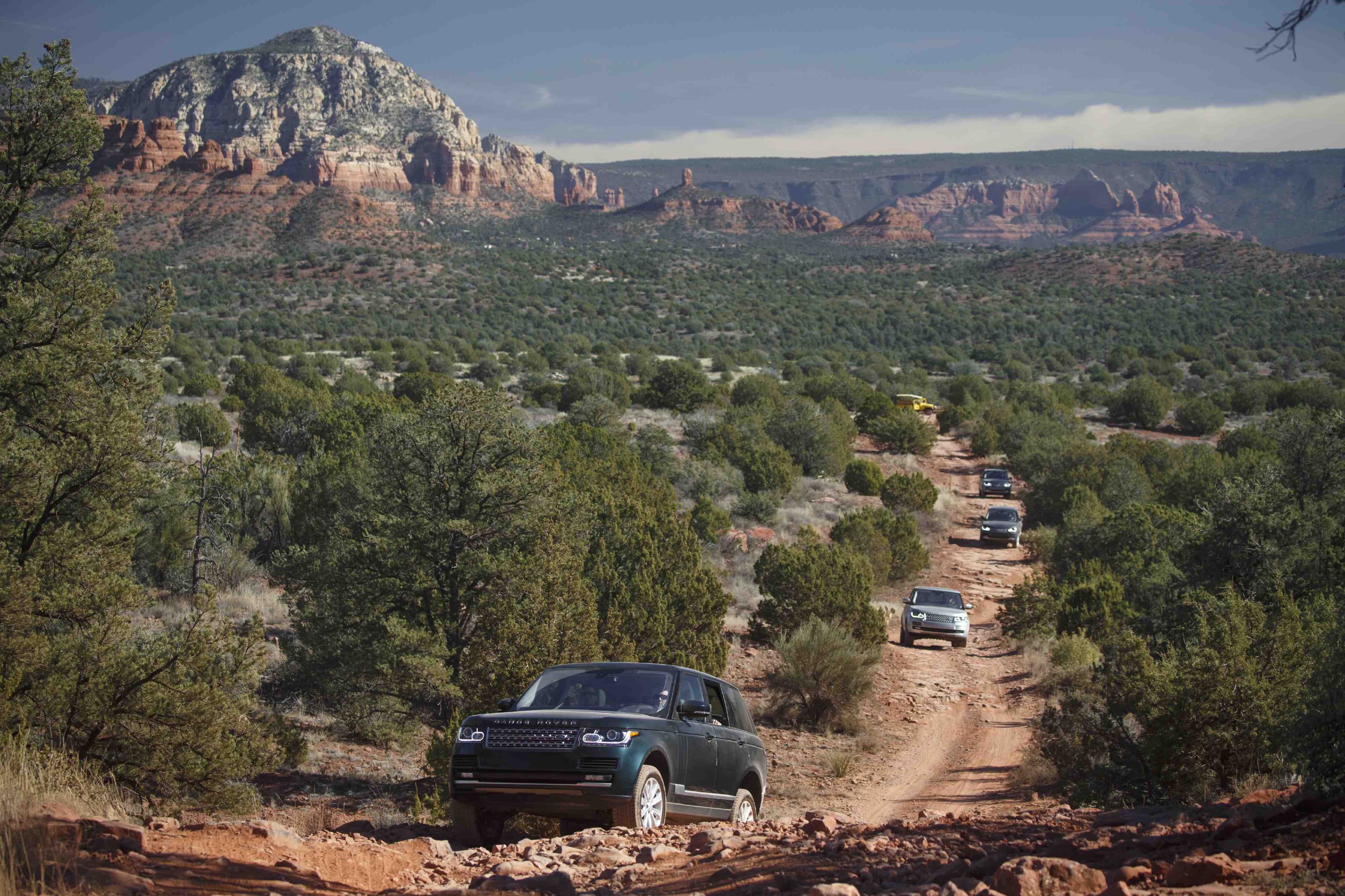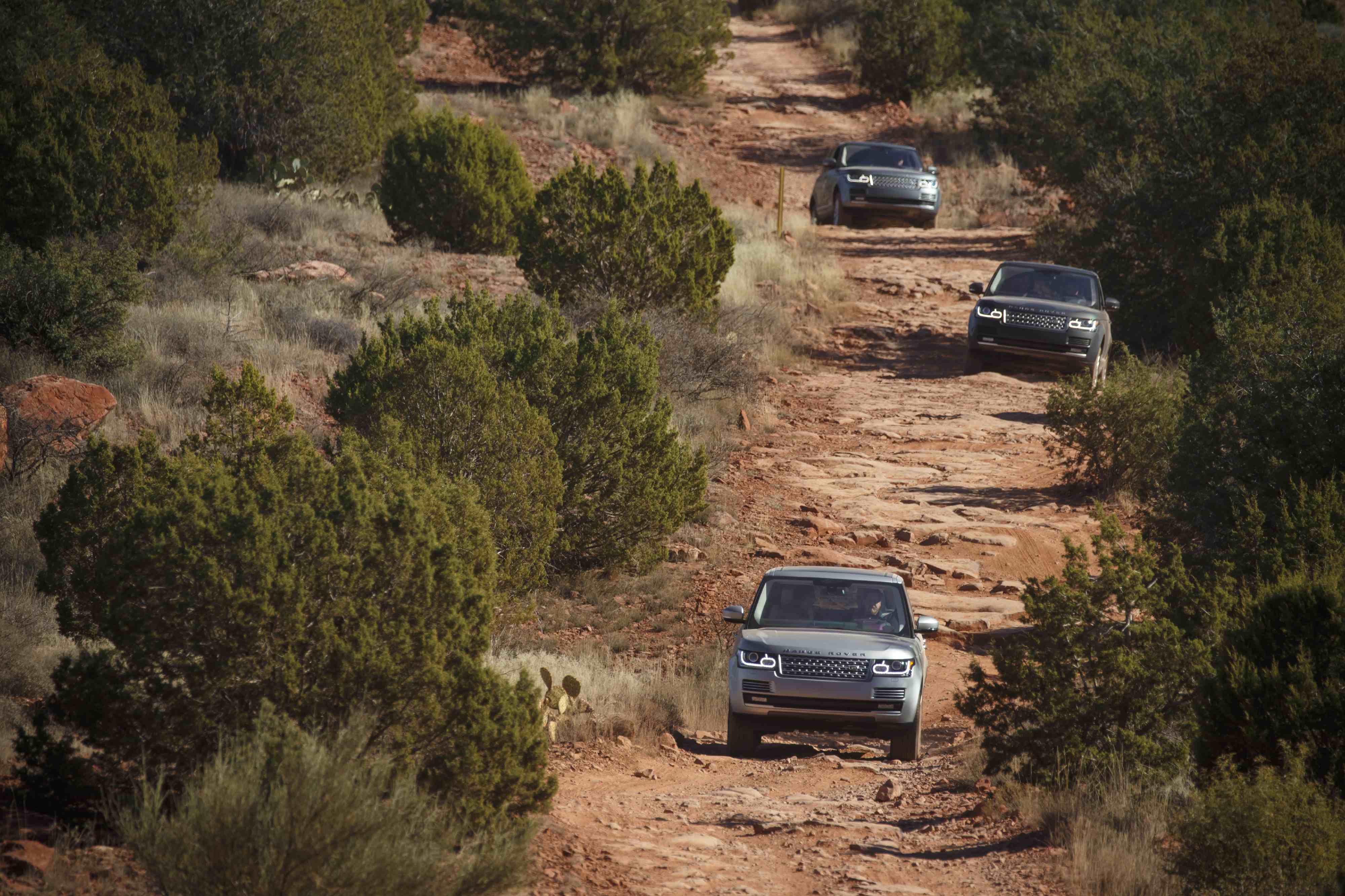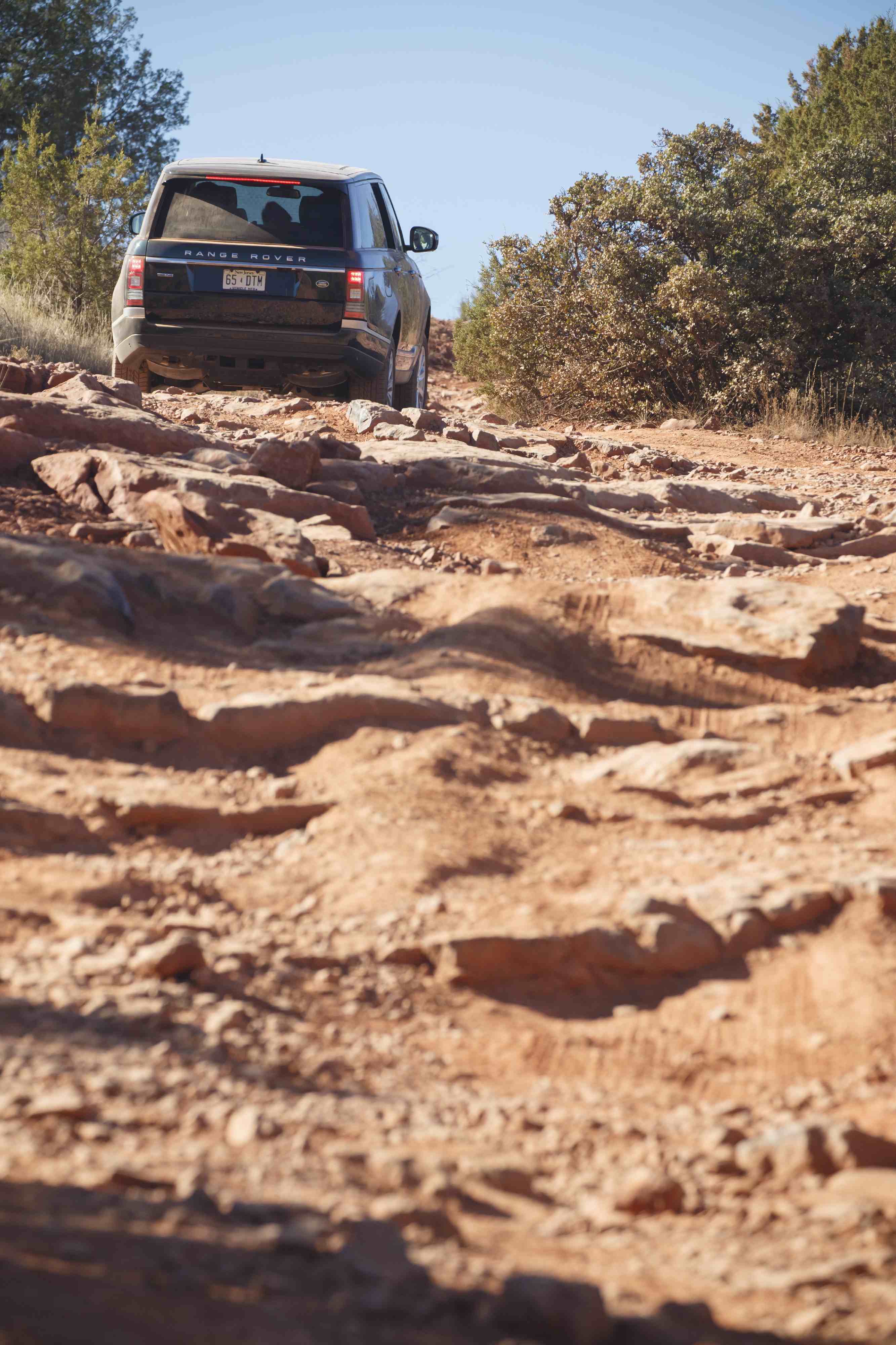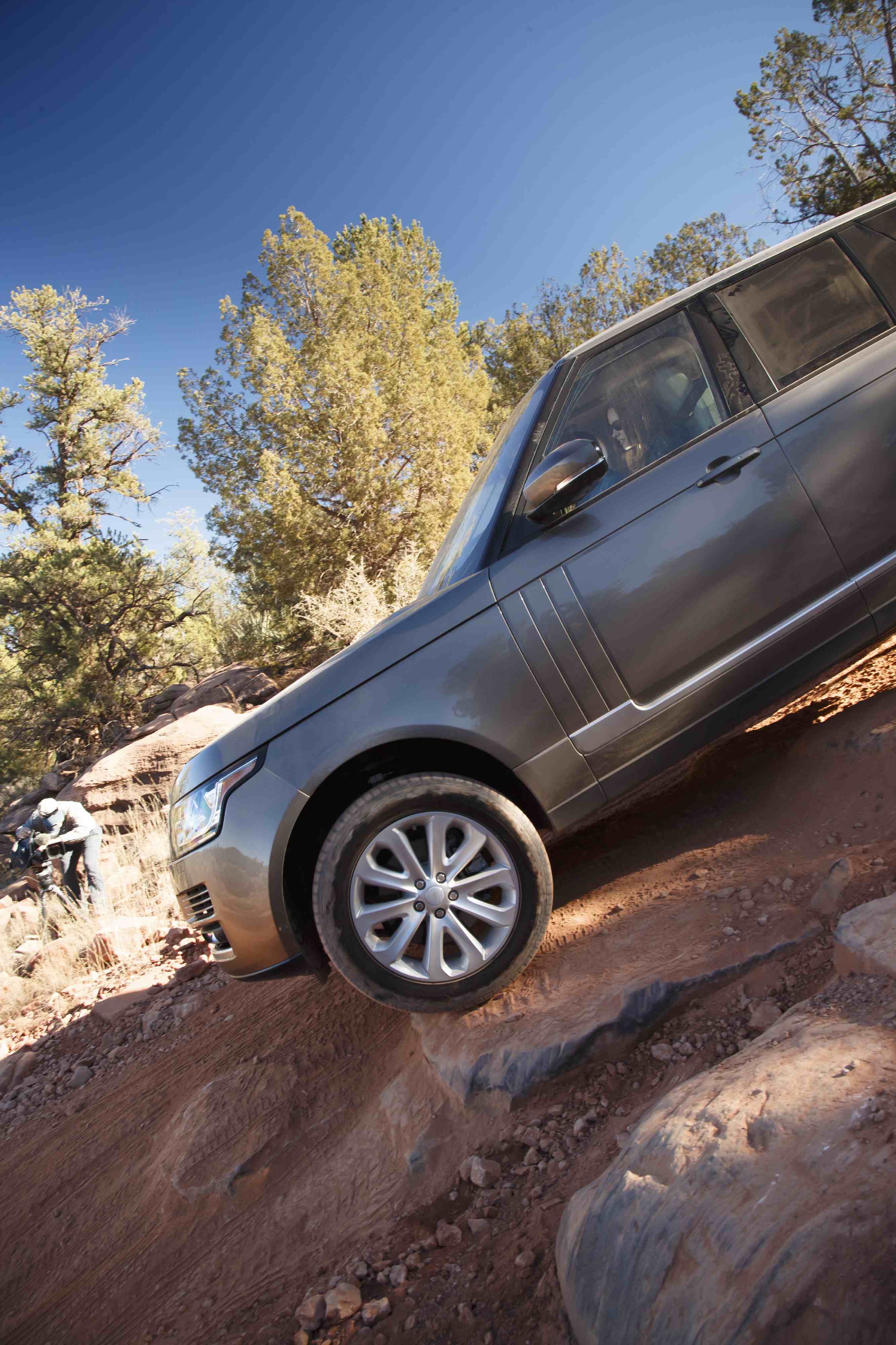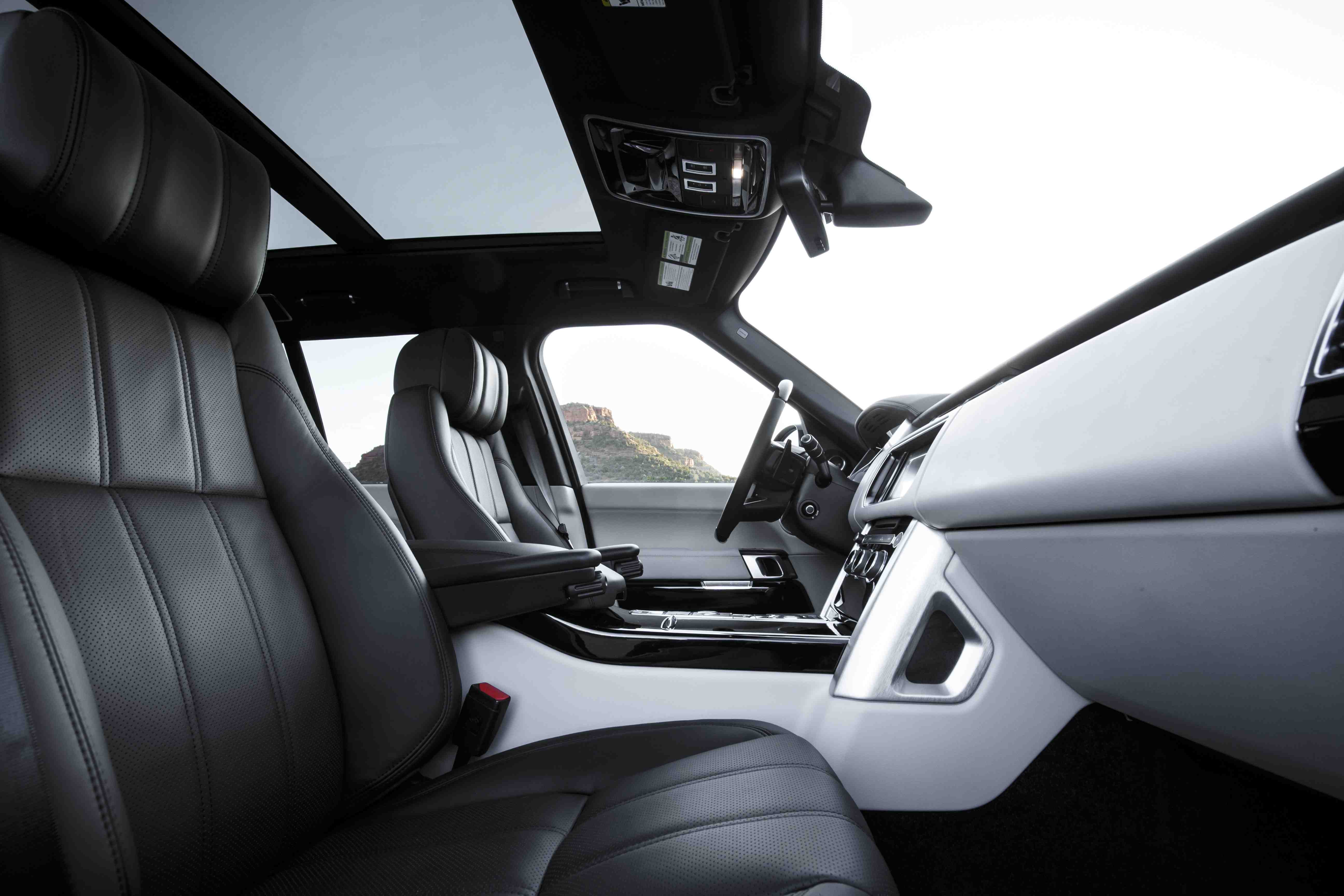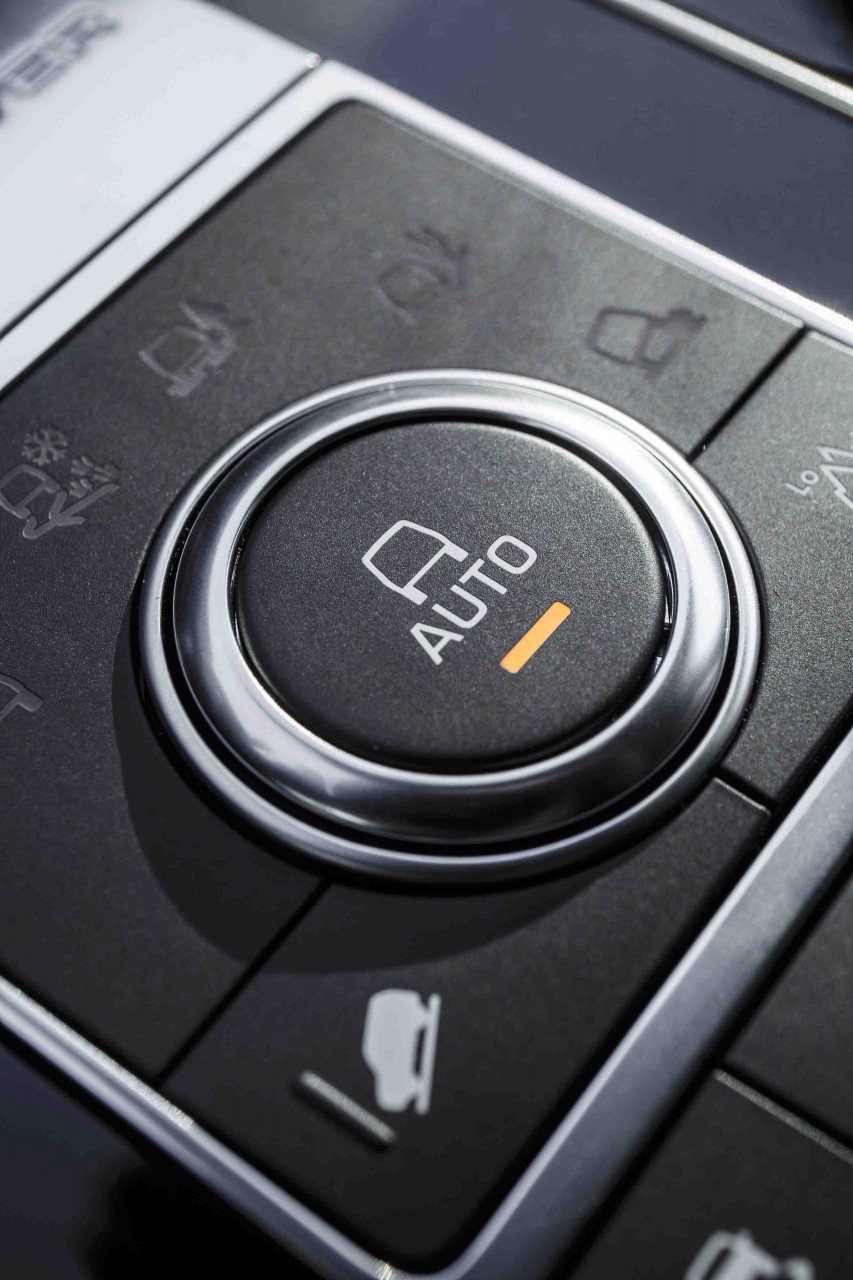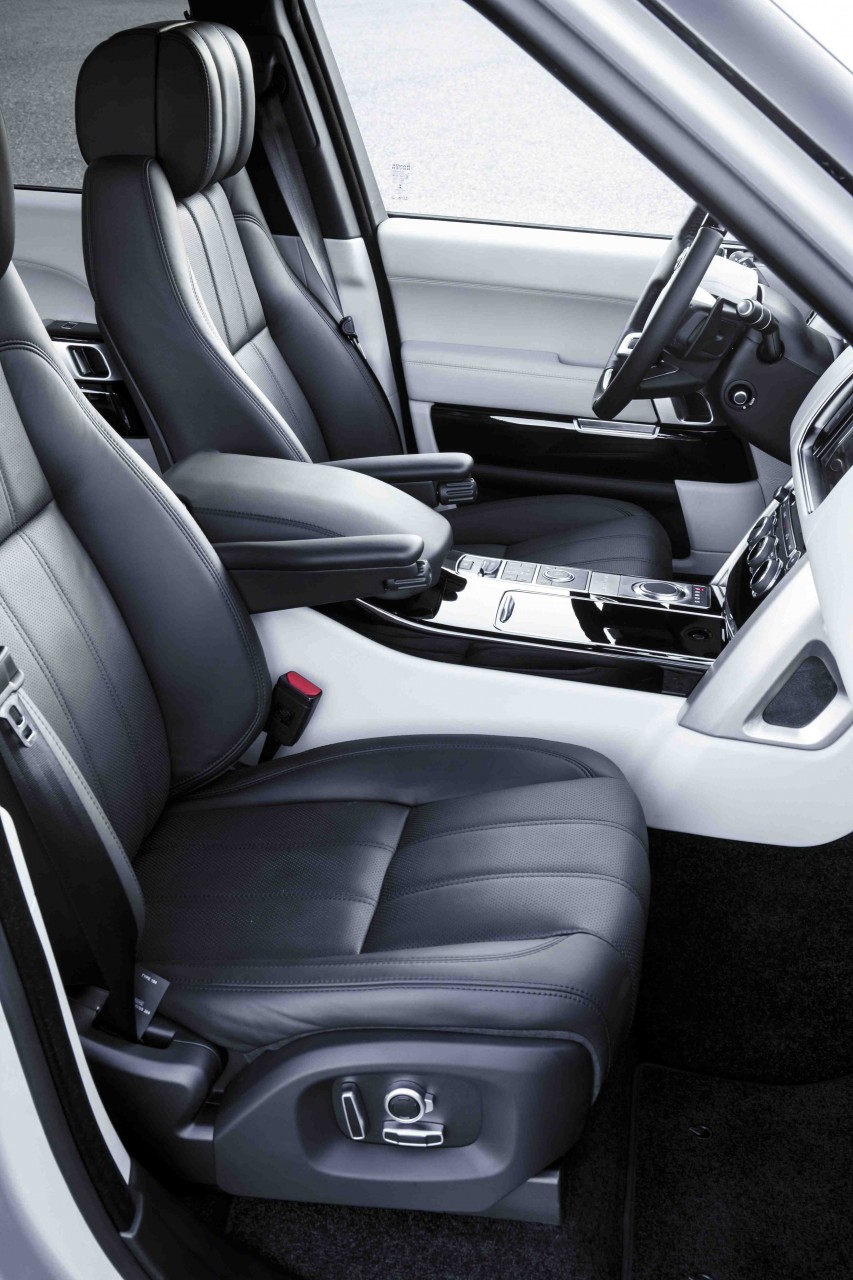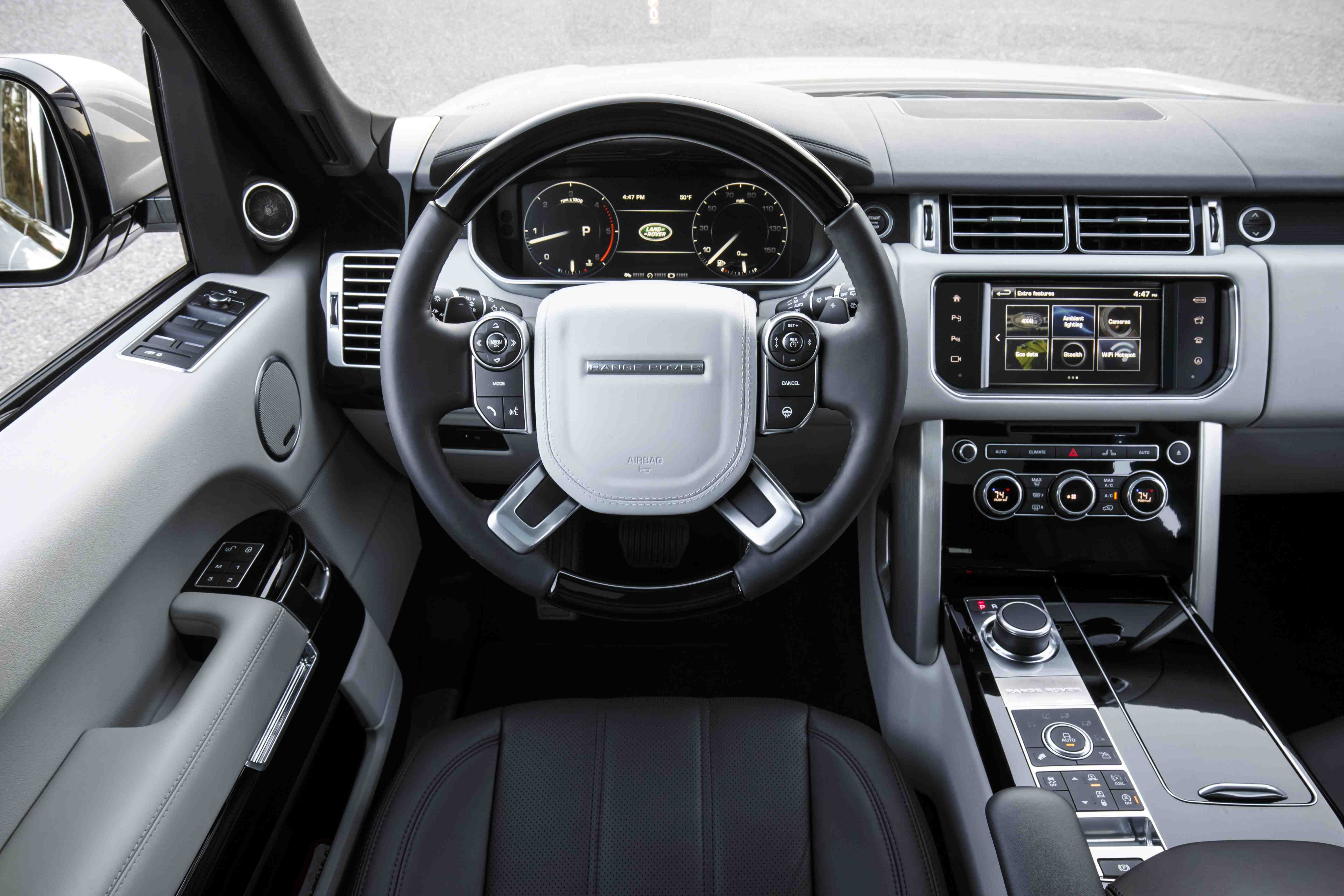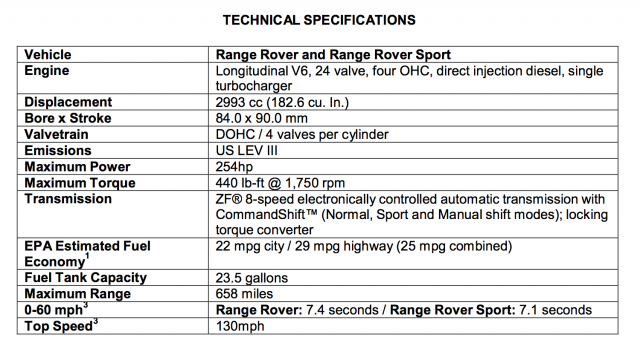As great as they are, Range Rovers are not go-to platforms for the modern overlander. The obvious reason is the entry point at over $85,000, a number nearly double that of the more approachable LR4. Earlier this year, when rumors circulated that Land Rover was going to send their new diesel-powered Range Rovers to the United States, many overlanders met that news with tepid interest.
Why a diesel powered Range Rover should register on our collective radar is simple enough. As the brand’s flagship platform, it serves as a bellwether for what is to come. That is of particular interest as we await the newest iterations of Discovery and Defender. When Expedition Portal was invited to spend time behind the wheel of the new diesel, it served as an opportunity to better assess the overall direction of the green oval.
The arrival of the Td6 Range Rover in the U.S. comes at an interesting time. Gasoline prices are predicted to remain low for the coming year, and Volkswagen did their best to undermine the public’s confidence in diesel engines altogether. Other manufacturers offering diesel options have not had tremendous success in the segment over the last couple of years. All of the above laid tricky groundwork for Land Rover to overcome.
Acknowledging consumer reservations, Land Rover’s engineers set to work to produce a power plant that addressed those concerns one by one. The new Td6 is powerful, quiet, smooth, and clean burning. It revs quickly, has an even power delivery, and throughout several rounds of consumer testing, behaved so much like a petrol engine, most testers didn’t know they were driving a diesel-powered vehicle. The only issue left on the table was the matter of cost to the consumer, but I’ll get to that later.
By the numbers, the 3.0-liter turbocharged V6 engine produces 254 horsepower with 440-pound-feet of torque at 1,750 rpm. When navigating within swift-moving traffic, the Range Rover Td6 can ramp up to 60mph in as little as 7.4 seconds, a time equal to its petrol-burning counterparts. With more than 7,000 pounds of towing capacity it ticks the boxes for utility use for those with big towing needs. Impressive as those numbers are, it is the fuel economy that interests most would-be buyers.
Despite its size, the full size Range Rover with its fuel sipping engine, can achieve a lean burn of just 29 mpg on the highway with a combined city/highway economy of 25 mpg. That equals a 32-percent increase in fuel efficiency over the gas engines and affords the vehicle a range of more than 600 miles. The advanced electronics housed within the in-dash infotainment system can even help the driver improve driving habits for optimal economy.
Where it counts – Off-road
As the pinnacle of Land Rover’s offerings, and staying true to their heritage, it was paramount to the design team that the Range Rover maintained its off highway performance. Central to that objective was the development of Rover’s All-Terrain Progress Control feature. Akin to a cruise control function for use in rugged or slippery terrain, the ATPC system controls the steady delivery of power and braking forces to each wheel independently. With the system activated, the driver can select an appropriate speed from 1 to 19 mph and the vehicle will follow the terrain steadily, adapting to every surface and obstacle. Adjusting speed is done manually with the click of a button on the steering wheel in increments of 1 mph. Once engaged, the driver only needs to steer. This reduces stress on the driver as well as on the various vehicle components.
Augmenting the ATPC feature is Land Rover’s next generation Terrain Response 2 system. Whereas the previous traction control system required the driver to dial in the system to match terrain conditions, the new Terrain Response feature can now detect which mode it should be in at any given time and make those configurations automatically. The new Rover can sense when it is on snow, sand, rock, or pavement and tune the suspension, transmission, and throttle responses accordingly.
In our testing, it was difficult to get a wheel to spin, even for just a moment. When used by expert and novice drivers alike, the ATPC and Terrain Response systems allowed the Range Rover to gently and predictably crawl over any obstacle with impressive poise. When a wheel detected compromised traction, we noticed a brief hesitation as the system mechanically evaluated the forces at play and made instant corrections to maintain forward progress. We could sense the Range Rover was calculating, almost thinking about how to best maintain progress. For those drivers unfamiliar or unskilled at the subtle art of left-foot braking, the ATPC system eliminates the need to use either pedal––at all. Even drivers with years of experience, some with Camel Trophy pedigrees, found the system worked exceptionally well.
Further adding to the capability and drivability of the Rover are the smooth characteristics of the engine itself. The low end torque, especially when paired to the ATPC system, allowed the wheels to overcome rocks and ledges without an excessive spool-up of revs. The power band is predictable, linear, and easily managed in all of the off-road scenarios we encountered.
The driver interface is commensurate with what we would expect of Land Rover. Visibility is superb, the ergonomics are luxurious without eroding the support needed for off-road driving, and all of the instrumentation and electronic functions are intuitive. If any of these attributes trickle down into the Discovery and even Defender models, we would not be disappointed.
https://www.youtube.com/watch?v=90SLNDV9Haw#t=15
https://www.youtube.com/watch?v=Tr_lLmWOl6w
The value proposition
Using the word value in connection with a Range Rover may be a stretch, but the Td6 diesel, unlike many competitor products, provides more than just the illusion of value. Aside from the 32% increase in fuel efficiency, a cost savings of an estimated $450 per year over gasoline, the Td6 engine is only an additional $1,500 option. That is a tiny percentage of the total vehicle price. Other manufacturers offering diesel options charge up to $4,000. On a parting note, $84,000 is a sizable sum for any vehicle, but given the amount of technology, capability, luxury, and driving enjoyment packed within the Range Rover Td6, it is a tremendous amount of car.
The lap of luxury
In keeping with the Range Rover’s raison d’être, the new models are as well appointed as the most up market saloon cars. Driver and passenger comfort is sublime with the leather wrapped seats offering heated and cooled climate controls. The large glass roof baths the interior in natural light amplifying the sense of openness within the cabin. On the highway, the big Range Rover is quiet as a church, smooth as silk, and tracks straight as an arrow. When pressed into turns, or coaxed to speed with spirited acceleration, it has the snap and response of a true driver’s car. It is an astoundingly fun machine to drive––over any surface, and at any speed.
Like all Rovers, the visibility from the front seats is superb.
No distance is too far in a Range Rover. The driver’s seat makes for a great place to spend the day.
Keeper of the crown
The luxury SUV market has become increasingly competitive in the last few years as manufacturers scramble for a tiny slice of the global pie. The Range Rover’s position in the space has been challenged, but for the foreseeable future will remain the high water mark. So popular is the Range Rover line, sales throughout the international dealer network have continued to grow year over year at a time when many car companies are struggling. And it would appear no price-point is too steep for a Rangie buyer. The $200,000 Range Rover offered within the brand’s bespoke Autobiography catalog sells out as quickly as they are built.
We all know that those with house money to spend on an SUV are not going to be joining us on our next overland adventure. Ours is an audience eager to meet the new Discovery and Defender. Those vehicles will only arrive in our driveways if the Land Rover brand remains healthy and strong and the cornerstone of their business model is producing vehicles for the growing luxury SUV markets around the world. This includes sales of the Range Rover, Range Rover Sport, and Range Rover Evoque. The technologies packaged in these models at the top eventually work their way into more attainable price points. In that respect, the Range Rover Td6, although out of reach of most consumers, is a welcomed addition to North America.



